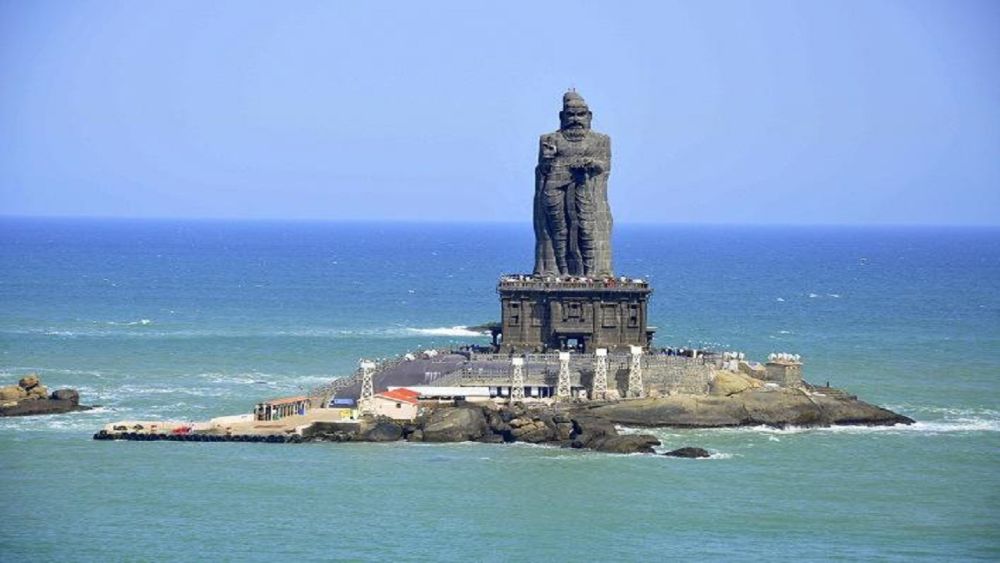

Kanyakumari, the southernmost tip of India, has long been a site of cultural significance and a popular tourist destination, attracting visitors from around the world. The region is known for its spectacular sunrises and sunsets, especially at the convergence of the Bay of Bengal, the Arabian Sea, and the Indian Ocean. Among the many attractions, the Thiruvalluvar Statue stands as a beacon of moral and philosophical significance. Inscribed with the writings of the celebrated Tamil poet and philosopher, Thiruvalluvar, it serves as a monument celebrating Tamil literature and ethics.
The construction of the statue began in 1990 and it was completed in the year 2000. The statue, standing at a majestic height of 133 feet (40.6 meters), represents the 133 chapters of the Thirukkural, a classic Tamil text composed of 1,330 couplets. The monument was inaugurated on January 1, 2000, and has since been a potent force for the tourism industry in Kanyakumari.
The Thiruvalluvar Statue has become a symbol of the deep cultural roots of Tamil Nadu and inspires reverence for local literary and philosophical traditions. The statue itself is located atop a small island near the confluence of the three ocean bodies, making it a unique location that draws tourists. A ferry service takes visitors to the rock where they can experience this architectural marvel up close.
The statue is strategically placed near the Vivekananda Rock Memorial, another important tourist destination, thereby creating a combined spiritual and cultural experience for visitors. Together, both monuments attract millions of tourists every year, contributing significantly to the local economy and reinforcing the importance of these sites in Indian heritage and tourism.
In recent years, tourism trends at the Thiruvalluvar Statue and Kanyakumari have evolved with advances in tourism infrastructure and technology. There is now a greater emphasis on sustainable and responsible tourism, with local authorities and businesses working to preserve the natural beauty and cultural significance of the region.
Digital technology has also reshaped the tourism experience, with virtual tours and augmented reality applications developing to provide immersive experiences for those unable to travel. Social media plays a crucial role in promoting this iconic destination, with countless images and stories shared by visitors igniting interest in potential tourists from across the globe.
Modern tourism management practices are being implemented to handle the influx of tourists, including organized queuing systems, improved facilities, and enhanced accommodations. Local arts and crafts, as well as traditional foods, are also being promoted to offer tourists a holistic experience of the culture of Tamil Nadu.
Despite facing challenges such as pollution and overcrowding, the Thiruvalluvar Statue remains a strong testament to the rich cultural heritage of the region and continues to be a focal point for tourists seeking enlightenment and wonder at the southern edge of the Indian subcontinent.